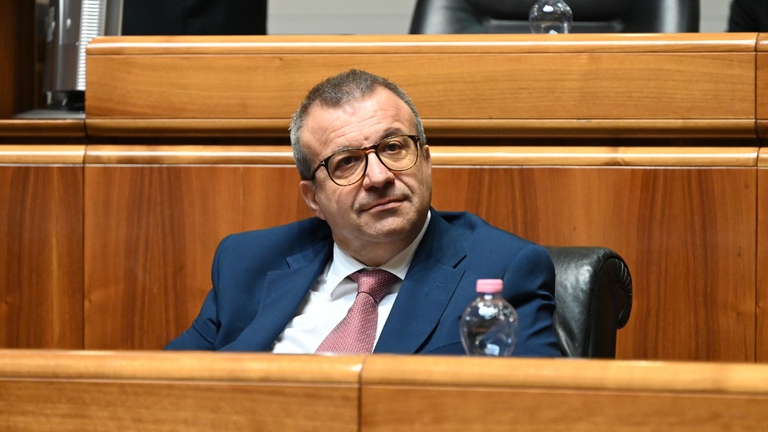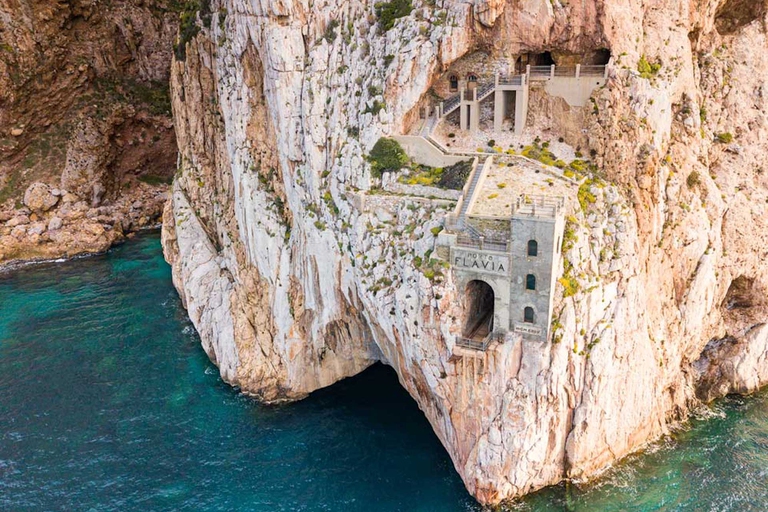https://www.lifegate.it/materie-rare-sardegna
- |
- In Sardinia, there are those who oppose a law decree that overrides the autonomy of the Region to manage the mines of critical raw materials.
- The government's provision intends to pursue the achievement of the objectives set by the Critical raw materials act.
- Rather than competing on autonomy, it would be better for the population if the State and Region collaborate on a common project.
The Italian Council of Ministers recently approved a law decree whose declared objective is to mark a significant step in the search for critical raw materials, essential for the production of batteries and other technological devices.This decree fits into the context of growing global competition for elements such as cobalt, copper, lithium, magnesium, graphite, nickel, silicon, tungsten and titanium, defined as fundamental for the economic and technological future of Italy and Europe.
Particular attention is paid to Sardinia, a region rich in potential deposits of critical raw materials.Recent legislation provides for a mapping of abandoned mining sites and an assessment of the conditions for extracting the resources.The historically significant Sardinian mines could reveal themselves crucial for the recovery of materials such as rare earths, zinc and lead, still present in non-negligible quantities in landfills and in the sludge of the metal mines in Sardinia closed in the 1990s (among the most famous mines are Monteponi, Montevecchio, Masua, Malfidano Ingurtosu).But the decree also raised strong concerns.

The decree on critical raw materials does it go against the autonomy of Sardinia?
Promoted by Adolfo Urso and Gilberto Pichetto Fratin, respectively ministers of Made in Italy and of the Environment and energy security, the decree aims to simplify authorization procedures for extractive activities, reducing the permit issuance times to 18 months for extraction activities and ten months for processing and recycling activities.This measure, the two ministries say, is designed to facilitate the digital and green transition, as well as to promote European independence from Chinese supplies of critical raw materials.
But the decree was not liked by part of Sardinia's civil society:the newspaper The Sardinian Union he even spoke of a "coup" and "constitutional blitz", as it would go to undermine regional autonomy on the management of mineral resources.The Sardinian statute, in fact, guarantees the region primary competences in this sector, but the new decree introduces a clause that could overlap state competences with regional ones.This aspect of the decree could lead to a redefinition of powers between State and Region, raising questions of constitutional legitimacy, and precisely at a historical moment in which the government has pushed for the approval of a law on the differentiated autonomy of the regions with special statute, which also includes Sardinia (the law was approved by the Chamber on 19 June 2024).

The position of the Sardinia Region
The Italian decree aligns with the Critical raw materials act, a package of measures approved by the European Union to reduce dependence on imports of critical raw materials, particularly from China.The European regulation provides that by 2030 at least 10 percent of the critical raw materials consumed in the EU are extracted on European soil and that 40 percent of the materials are processed within the continent.
“As the autonomous Region of Sardinia we evaluate very positively the employment and economic consequences that can arise from the application of the provision under discussion”, explained Emanuele Cani, councilor for industry of the Sardinia Region during a hearing on the Strategic Raw Materials Decree in the Chamber of the Deputies.“However, some preliminary considerations must be made, given the history of exploitation of our territory which has a density of mining settlements unparalleled in Italy, which remain as evidence of activities that have left us a legacy of abandoned quarries and mines and unmanaged waste".According to Cani, the provision presents a series of critical issues:among these, the use of a decree-law in a context "in which the requirements of necessity and urgency are not justified at all".Furthermore, "the provisions", continues the councilor, "leave various critical questions about regional competences and the effective participation of local communities in decisions that directly influence their territory".With respect to the three different administrative procedures outlined by the provision, i.e issuing of titles, authorization for recycling and transformation of critical raw materials, “it would be good to foresee a role procedural of the Region concerned;just as the methods for paying the fees to the regions should be better clarified".
The solution?More collaboration between State and Region
But discussing the degree of autonomy risks being more of a problem with political connotations than a substantive one, such as Franco Manca explains to LifeGate, geologist and former manager of mining companies wholly controlled by the autonomous region of Sardinia.““The mining sector, regulated by Royal Decree 1927 n.1443, at the end of the seventies came under the control and management of the autonomous region of Sardinia.But today, regardless of the legislative decree under discussion, the autonomous region of Sardinia, in order to issue a mining license for the research and cultivation of raw materials, must necessarily wait for the environmental impact assessment, the management of which is the responsibility of the Ministry of the Environment.Therefore, in this the Region is not completely autonomous".As regards the reprocessing of landfills, sludge and waste with new technologies that perform better than in the past, "it could be possible to recover the metals and at the same time reclaim the mining areas", says Manca, with a view to circular economy.“But beyond the definition of the guidelines for the reclamation, no concrete actions have been carried out to resolve or minimize the environmental impact which penalizes the territory and prevents a complete valorisation of the high historical, geological, environmental and landscape values”.
Rather, the question on which reason is another, according to the geologist.“I hope that government and regions, without distinction, take up the strong indication coming from the European Union, so that they can share common solutions to solve a decades-old pollution problem".An example of significant reuse is represented by sites intended for mining archaeology: the best known is Porto Flavia, in Iglesias, a tunnel dug into the cliff for the transport of minerals built in 1924, visited by thousands of tourists every year.Behind it there are 5 million cubic meters of landfills and sludge basins, as well as abandoned industrial plants and buildings.“To complete the valorisation of the mining area and aim, the Sardinia Region published an international tender for the transfer of the entire area to companies in the tourism sector, so as to guarantee the creation of accommodation facilities and services suitable to satisfy a growing industry demand;but the constraint deriving from the obligation to subject the area to reclamation as a priority nullified the outcome of the tender and today, more than 15 years later, the area still remains to be reclaimed”.
Franco Manca's hope is that the law decree on critical raw materials is a step forward towards restarting with the sustainable valorisation of extractive activities and with the start of reclamation activities of old mineral deposits aiming at the recovery of existing metals.“But for this to happen it is necessary for the government to recognize the role of the Region”, concludes the geologist, sharing a strategic plan that on the one hand respects the requests of the European Union and on the other creates the conditions for development of the territory of Sardinia .If a conflict were triggered between State and Region, it would instead be yet another missed opportunity.
